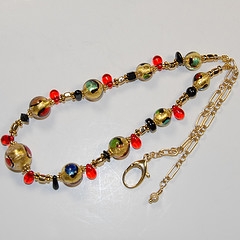
Murano glass
I want to introduct something about RG 59 TV coaxial cable, RG 6 TV coaxial cable, with CCS or CCA conductor. RG 59 TV coaxial cable, RG 6 TV coaxial cable, with CCS or CCA conductor Place of Origin: China Guangdong Outer Diameter: 6.8MM Packing: Carton Box Color: White Application: DVD Player Type: Coaxial Brand Name: MXC Model Number: RG 59 Connector Type: NONE Shielding: Braid Gender: NONE Connector Color: NONE Company Info Price Terms: FOB Shenzhen USD 4.5~5.0 Terms of Payment: L/C,T/T Supply Ability: 500000 Pack/Packs per Month Minimum Order: 200 Pack/Packs 100 meters/roll. Packaging: 100 meter/roll, outer is carton, or 300 meters/wooden reel, outer is carton. Delivery Lead Time: 15 days after received the down payment. Name: RG 59 / RG 6TV coaxial cable <
Murano glass paper weights
Murano glass has been a famous product of the Venetian island of Murano for centuries. Located off the shore of Venice, Italy, Murano was a commercial port as far back as the 7th century. By the 10th century it had become a well-known city of trade. Today Murano remains a destination for tourists and art and jewellery lovers alike.
History of Murano Glassmaking
Murano reputation as a centre for glassmaking was born when the Venetian Republic, fearing fire and destruction to the city mostly wood buildings, ordered glassmakers to move their foundries to Murano in 1291. Murano glass is still interwoven with Venetian glass.
Murano’s glassmakers were soon the island most prominent citizens. By the 14th century, glassmakers were allowed to wear swords, enjoyed immunity from prosecution by the Venetian state and found their daughters married into Venice most affluent families. However glassmakers were not allowed to leave the Republic. Many craftsmen took this risk and set up glass furnaces in surrounding cities and as far afield as England and the Netherlands.
By the end of the 16th century, three thousand of Murano island’s seven thousand inhabitants were involved in some way in the glassmaking industry.
Murano glassmakers held a monopoly on quality glassmaking for centuries, developing or refining many technologies including crystalline glass, enamelled glass (smalto), glass with threads of gold (aventurine), multicoloured glass (millefiori), milk glass (lattimo), and imitation gemstones made of glass. Today, the artisans of Murano are still employing these century-old techniques, crafting everything from contemporary art glass and glass jewellery to Murano glass chandeliers and wine stoppers.
Today, Murano is home to the Museo Vetrario or Glass Museum in the Palazzo Giustinian, which holds displays on the history of glassmaking as well as glass samples ranging from Egyptian times through the present day.
Murano Glass was produced in great quantities in the 1950s and 1960s for export and for tourists.
The Art of Glassmaking
The process of making Murano glass is rather complex. Most Murano glass art is made using the lampworking technique. The glass is made from silica which becomes liquid at high temperatures. As the glass passes from a liquid to a solid state, there is an interval when the glass is soft before it hardens completely. This is when the glass-master can shape the material.
Murano glass today
Some of the Murano’s historical glass factories remain today as well known brands, amongst them Venini, Barovier & Toso, Pauly, and Seguso. The oldest glass factory is Pauly & C. – Compagnia Venezia Murano, founded in 1866.
Orange Murano Beads
Murano Millefiori Pendant
Materials
The other raw materials, called flux or melting agents, soften at lower temperatures. The more sodium oxide present in the glass, the slower it solidifies. This is important for hand-working because it allows the glassmaker more time to shape the material. The various raw materials that an artisan might add to a glass mixture are sodium (to make the glass surface opaque), nitrate and arsenic (to eliminate bubbles) and colouring or opacifying substances.
Colours, techniques and materials
Colours, techniques and materials vary depending upon the look a glassmaker is trying to achieve. Aquamarine is created through the use of copper and cobalt compounds whereas ruby red uses a gold solution as a colouring agent. The millefiori technique begins with the layering of sliced canes of glass and conterie or tiny glass beads are formed by cutting thin glass canes into sections when cold then rounded when hot. Filigree, incalmo, enamel painted, engraving, gold engraving, lattimo, ribbed glass and submersion are just a few of the other techniques a glassmaker can employ.
Sommerso
Sommerso (lit. “submerged” in Italian), or “sunken glasses”, is a form of artistic Murano glass that has layers of contrasting colors (typically 2), which are formed by dipping the object in molten glass; the outermost layer, or casing, is often clear. Sommerso was first formed in Murano during the late thirties, made popular by Seguso d’Arte in the fifties. This process is a popular technique for vases, and is sometimes used to form sculptures.
Tools
It is essential that Murano artisans use tools in the making of their glass. Some of these tools include borselle (tongs or pliers used to hand-form the red-hot glass), canna da soffio (blowing pipe), pontello (an iron rod to which…(and so on) To get More information , you can visit some products about Hot Stamp Foil, Aluminium Tool Boxes, . The RG 59 TV coaxial cable, RG 6 TV coaxial cable, with CCS or CCA conductor products should be show more here!
About the Author
himfr can provide you most popular hot products from china!
Pino Signoretto – Dexterity Master